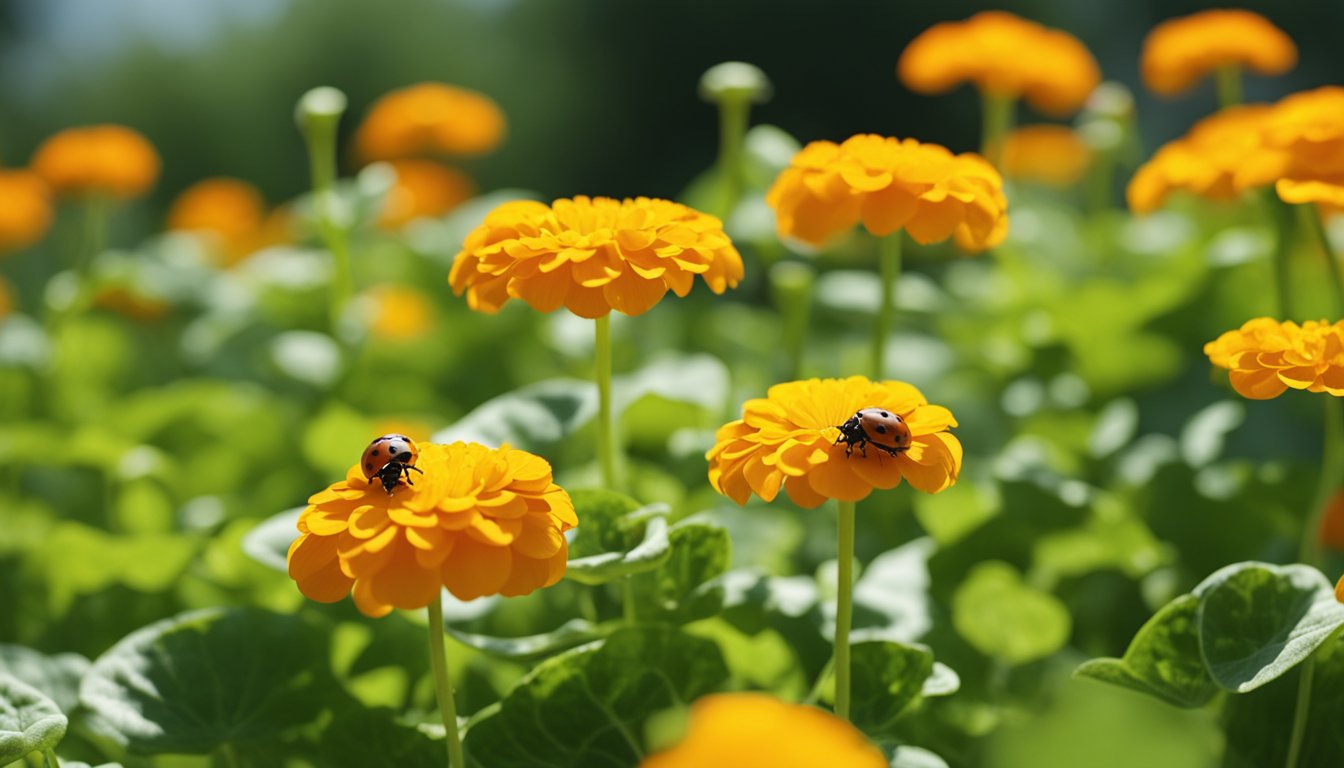Every farmer knows that healthy crops are the backbone of a successful harvest. With unpredictable weather patterns and increasing pest populations, protecting our crops has never been more crucial. I’ve seen firsthand how the right strategies can make all the difference, ensuring not just abundance but sustainability for future generations.
In this text, I’ll explore effective methods for safeguarding our crops against threats. From innovative technologies to organic practices, there’s a wealth of knowledge available that can help you maximize your yield. Join me as we delve into the world of crop protection, empowering you to take charge of your agricultural success and secure a thriving future for your farm.
Importance Of Protection Of Crops
Crop protection plays a vital role in agriculture. Healthy crops lead to better yields, feeding communities, and driving economies. Protecting plants from pests, diseases, and harsh weather increases food security. It’s not just about productivity; it’s about safeguarding our future.
Farmers often rely on innovative methods. Integrated pest management combines biological, cultural, and chemical strategies. Using these methods reduces chemical use while controlling pests effectively. Organic practices encourage biodiversity, enhancing soil health and crop resilience.
Proper crop protection also limits financial loss. Farmers face vibrant markets, but crop damage can slash profits. Robust protection strategies keep crops safe and income stable. This ensures families can thrive, relying on their hard work.
Investing in crop protection technologies boosts global agriculture. Drones and sensors monitor fields, providing real-time data. This information allows farmers to act quickly, preventing potential threats. Smart farming reflects a shift toward data-driven decisions, optimizing productivity.
Climate change adds urgency to crop protection. Altered weather patterns create new challenges for farmers. By adapting protection methods, I can help mitigate these risks, ensuring sustainable practices survive. The right strategies protect not just my crops, but also the health of the planet.
Supporting crop protection strengthens our food supply chain. It encourages research, innovation, and collaboration. Together, we can tackle agricultural challenges head-on, ensuring abundant harvests for future generations.
Common Threats To Crops – Protection of Crops

Healthy crops face various threats that can impact yield and quality. Understanding these threats helps in developing effective protection strategies.
Pests
Pests are the bad guys of farming. Insects, like aphids and beetles, munch on plants, weakening them. Rodents enjoy a tasty snack, too, raiding fields and barns. These creatures reproduce quickly, meaning a few can turn into many. Farmers often turn to integrated pest management to keep these unwanted guests at bay. They combine methods, using natural predators, traps, and sometimes targeted pesticides to manage pest populations effectively.
Diseases – Protection of Crops
Diseases spread like gossip among crops. Fungi, bacteria, and viruses can infect and destroy plants. Symptoms may include yellowing leaves or wilting. These diseases thrive in warm, humid conditions. Keeping crops healthy through proper watering and spacing limits disease spread. Farmers often select resistant varieties, acting as a shield against common diseases. Regular monitoring ensures that problems get addressed early before they spread.
Environmental Factors
Weather can be fickle, and crops feel the brunt of it. Droughts zap moisture while flooding drowns roots. Extreme temperatures can scorch leaves or freeze tender shoots. Crops also face threats from storms that can cause physical damage. Understanding local climate patterns aids farmers in selecting the right crops for their conditions. They employ protective measures, such as row covers or irrigation systems, to safeguard against environmental variables.
Awareness of these threats allows farmers to act before issues escalate. With the right strategies, they can protect their crops and secure their harvests.
Innovations In Crop Protection
Innovations in crop protection are transforming agriculture. Farmers now use advanced technologies and sustainable practices to shield their crops from threats.
Technology Advances – Protection of Crops
Drones play a key role in modern crop protection. These flying machines scout fields, identify problems and collect data. Sensors also assist by monitoring soil health and weather conditions. With this information, farmers can make quick decisions to safeguard their crops. Automated sprayers can apply pesticides precisely, reducing chemical use. Smart farming apps help track pest activity in real-time, allowing farmers to respond instantly. Who knew technology could work so hard for our food?
Methods Of Protection Of Crops

Farmers employ various methods to protect crops from threats. Understanding these methods ensures better yields and healthier plants.
Chemical Control
Chemical control involves using pesticides to manage pests and diseases. Different types of pesticides target specific pests. For example, insecticides focus on insects, while fungicides tackle fungal diseases. Farmers apply these chemicals according to recommendations to minimize risks to the environment and human health. It’s crucial to follow safety guidelines, so keep protective gear handy. Using combined approaches often increases effectiveness.
Biological Control – Protection of Crops
Biological control relies on natural predators to manage pests. For instance, ladybugs feast on aphids, helping keep their numbers down. Additionally, farmers can introduce parasitic wasps that target specific pests. Emphasizing these natural solutions protects crops without harsh chemicals. This method promotes a balanced ecosystem while keeping pests in check. It’s like recruiting a tiny army to protect your crops, only, this army has six legs!
Before You Go – Protection of Crops
Protecting crops is more than just a necessity; it’s a commitment to sustainable agriculture and food security. By embracing innovative technologies and integrated pest management, I can ensure my crops thrive despite challenges.
The methods I choose not only enhance my yields but also contribute to a healthier ecosystem. As I adapt to changing climate conditions and evolving pest threats, I see the importance of continuous learning and collaboration in this field.
Ultimately, investing in crop protection isn’t just about safeguarding my harvest; it’s about securing a stable future for my community and the generations to come. Don’t forget to add The Herb Prof to your favorites so you don’t miss out on future articles.
References – Protection of Crops
Little Herb Encyclopedia, by Jack Ritchason; N.D., Woodland Publishing Incorporated, 1995
The Ultimate Healing System, Course Manual, Copyright 1985, Don Lepore
Planetary Herbology, Michael Tierra, C.A., N.D., Lotus Press, 1988
Handbook of Medicinal Herbs, by James A. Duke, Pub. CRP Second Edition 2007
The Complete Medicinal Herbal, by Penelope Ody, Published by Dorling Kindersley
Check the Following Articles
Discover the Best Tea for High Blood Pressure
The Amazing Maitake Mushroom Benefits for Your Health
Master Cold Tolerance in Avocados: A Guide to Growing
Benefits of Growing Perennial Vegetables For Your Garden
Frequently Asked Questions – Protection of Crops
Why are healthy crops important for a successful harvest?
Healthy crops are crucial for a successful harvest because they yield more produce and resist pests and diseases better. Healthy plants also support food security, ensuring that communities have access to essential nutrients. By maintaining healthy crops, farmers can achieve sustainable practices that benefit both the economy and future generations.
What are the main threats to crop health?
Crops face various threats, including pests, diseases, and adverse environmental factors. Pests like insects and rodents can damage plants quickly, while diseases from fungi, bacteria, and viruses can spread rapidly. Environmental factors such as droughts, floods, and extreme temperatures also significantly impact crop yield and health.
What is integrated pest management (IPM)?
Integrated pest management (IPM) is a strategy that combines biological, cultural, and chemical methods to control pests effectively. By minimizing chemical use while targeting pest problems efficiently, IPM promotes a balanced ecosystem and reduces risks to human health and the environment.
How can technology improve crop protection?
Technology enhances crop protection through innovations like drones and sensors, which provide real-time data on crop health and environmental conditions. Automated systems can apply pesticides more precisely, reducing chemical use. Smart farming apps help farmers monitor pest activity and make informed decisions quickly.
What role does crop protection play in food security?
Crop protection is essential for food security as it helps ensure that crops remain healthy and resilient against threats. By safeguarding plants from pests and diseases, farmers can secure their harvests, leading to a stable food supply that supports communities and economies.
What methods can farmers use to protect their crops?
Farmers can use various methods to protect their crops, such as chemical control (pesticides), biological control (natural predators), and cultural practices (crop rotation and resistant varieties). Adopting a mix of these strategies increases crop resilience and reduces dependency on chemical treatments.
Why is investing in crop protection technologies important?
Investing in crop protection technologies is important as they enhance agricultural productivity and sustainability. Technologies like drones and sensors provide critical real-time information, allowing farmers to make timely decisions that improve crop health and reduce losses due to pests or environmental stress.
How does climate change affect crop protection strategies?
Climate change impacts weather patterns, increasing the prevalence of pests and diseases. Farmers need to adapt their crop protection strategies by adopting sustainable practices that account for these changes, ensuring that crops remain healthy and productive despite environmental challenges.

